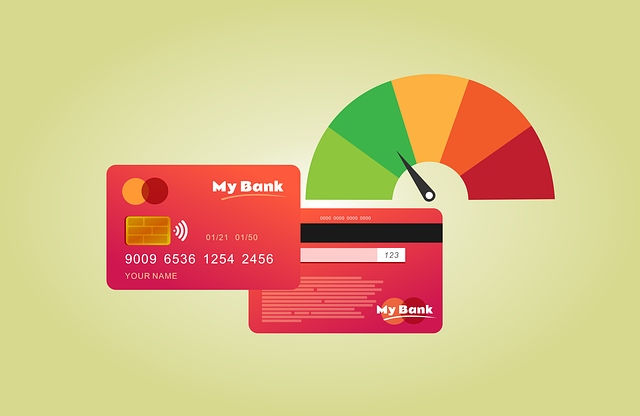What is Collateral in Small Business Financing?
Collateral in small business financing refers to assets or property that a borrower pledges to a lender as security for a loan. Quality collateral can include real estate, equipment, inventory, or accounts receivable. This provides the lender with assurance that if the borrower defaults on the loan, they can seize the collateral to recoup their funds.
Entrepreneurs and small business owners often need financing to start or grow their businesses. Lenders or other financial institutions may require collateral to mitigate the risk of lending money. By offering additional collateral, borrowers can increase their chances of securing financing.
Financing with collateral typically results in lower interest rates compared to unsecured debt. Lenders view loans backed by collateral as less risky since they have recourse if the borrower fails to repay the loan. This makes it easier for startups and small businesses with limited credit histories to access the capital they need.
What is the Collateral Coverage Ratio?
The collateral coverage ratio is a financial metric that lenders use to assess the risk associated with providing a loan to a borrower. It measures the value of the collateral against the loan amount. A high collateral coverage ratio leads to better loan terms and rates, while a low collateral coverage ratio could cause issues with approval.
Lenders calculate this ratio to evaluate the borrower’s ability to repay the loan in case of default. By analyzing this ratio, lenders can determine the level of protection they have if the borrower fails to make payments. Financial institutions may also use the collateral coverage ratio to set maximum loan limits.
Loan Amounts & Creditworthiness
Lenders use the collateral coverage ratio to decide on the maximum loan amount they can offer a borrower. A higher ratio indicates a lower risk for the lender, allowing them to provide larger loan amounts at favorable interest rates.
When assessing a borrower’s creditworthiness, lenders consider not only income and credit history but also the quality and value of assets provided as collateral. The higher the collateral coverage ratio, the more secure lenders feel about extending credit.
Types of Collateral Coverage Ratios
There are two main types of collateral coverage ratios.
Loan-to-Value (LTV) Ratio: Lenders use the loan-to-value ratio to assess the risk of a business loan by comparing the amount borrowed to the appraised value of the collateral. The ratio helps determine how much of the asset’s value is being financed and can impact the loan terms, such as interest rates and loan approval. A lower loan-to-value ratio indicates a lower risk for the lender, while a higher ratio may signal potential financial strain for the borrower.
Debt Service Coverage Ratio (DSCR): DSCR, or Debt Service Coverage Ratio, is a financial metric used to evaluate a company’s ability to cover its debt obligations. It is calculated by dividing a company’s operating income by its total debt service payments. A DSCR above 1 indicates the company has enough income to cover its debt payments.
Why is the Collateral Coverage Ratio important?
Lenders rely on the collateral coverage ratio to assess a borrower’s creditworthiness. This ratio acts as a safety net, ensuring that the lender can recover their funds through the collateral provided in case of default. By analyzing this key metric, lenders can make informed decisions about approving loans and determining appropriate loan amounts.
When seeking a loan, small business owners must understand the crucial role of the collateral coverage ratio. It plays a significant part in the lender’s due diligence process, providing an assessment of the borrower’s ability to repay the loan. Understanding this ratio helps small business owners present their case effectively, showcasing their financial history and demonstrating their ability to meet repayment obligations.
What is the Collateral Coverage Ratio Formula?
The collateral coverage ratio is calculated by dividing the value of the collateral by the amount of the loan. The formula is:
Collateral Coverage Ratio = Discounted Value of Collateral / Amount of Loan
Lenders use this ratio to assess the level of security the collateral provides against the loan amount. A higher collateral coverage ratio indicates a lower risk for the lender, as the value of the collateral exceeds the loan amount, providing a cushion in case of default. Conversely, a lower ratio may signal a higher risk for the lender.
Discounted Collateral Value
Discounted collateral value refers to collateral values that have been adjusted to reflect potential fluctuations in market conditions or other risk factors. Lenders often use valuation methods like appraisals or market comparisons to determine this discounted value accurately.
The primary risk factors that determine discounted collateral include:
Assets Being Used as Collateral: The type of asset impacts how much lenders discount its value. Lenders typically assess real estate at around 80% of its market value when determining its collateral value. Highly liquid assets, such as stocks or bonds, may have a lower discounted rate due to their ease of liquidation. On the other hand, assets that are harder to sell, like equipment or inventory, could be discounted by 20% to 40% to account for the additional risk and difficulty in converting them to cash.
The type of business loan: The type of business loan can significantly impact the discounted collateral value. For example, loans with higher collection costs typically have a larger discounted collateral value. Additionally, the terms and conditions of the loan, such as the loan-to-value ratio, can influence the discounted collateral value assigned to the collateral.
The Lender Issuing the Loan: Discounted collateral value can vary between lenders based on their risk tolerance and internal policies. For example, traditional banks may require higher discounted collateral values than alternative lenders or online platforms. Additionally, the type of collateral used can impact the discount rate different lenders apply.
Collateral Coverage Ratio Example
Say a company applies for a $100,000 loan. The lender requires collateral to secure the loan, and the company offers up equipment valued at $125,000 as collateral. The lender discounts the collateral by 20%, meaning its loan value is $100,000 ($125,000 x 0.2 = $25,000. $125,000 – $25,000 = $100,000).
Now we apply the collateral coverage ratio formula:
$100,000 (discounted loan amount)/$100,000 (loan amount) = 1.
The collateral coverage ratio in this scenario is 1, or 100%. That means the discounted value would cover 100% of the loan costs if the borrower defaults.
What’s considered a good Collateral Coverage Ratio?
Understanding the collateral coverage ratio is crucial when evaluating loan options. This ratio indicates the level of protection a lender has in case a borrower defaults on the loan. Business lenders typically seek a collateral coverage ratio between 1.0 and 1.6, ensuring that the value of collateral exceeds the loan amount.
A good collateral coverage ratio provides assurance to lenders that they can recover their funds by selling the collateral if needed. For instance, if a business has assets valued at $200,000 and is seeking a loan of $120,000, the collateral coverage ratio would be 1.67 ($200,000 / $120,000). This ratio demonstrates that the collateral’s worth is more than sufficient to cover the loan amount.
A low collateral coverage ratio typically falls below one. This can lead to issues with approval or getting the desired loan amount.
What are the benefits of Collateral in Business Financing?
Pledging collateral in a business loan offers several benefits that can help both the borrower and the lender. It can increase the chances of approval for the loan, as the lender has a form of security in case the borrower defaults. This reduced risk for the lender can lead to lower interest rates for the borrower, making the loan more affordable in the long run.
Having collateral can allow businesses to access more significant loan amounts than they would be able to otherwise, providing them with the capital needed to grow and expand. Pledging collateral can also help businesses build credit history and establish a positive relationship with lenders, which can be beneficial for future financing needs. Overall, collateral can be a valuable tool for businesses looking to secure financing and achieve their goals.
What are the drawbacks of Collateral in Business Financing?
When businesses opt to use collateral for financing, they need to consider several drawbacks. One significant drawback is the risk of losing the pledged assets if the company fails to repay the loan. This can have severe consequences, such as losing property or equipment essential for the business’s operation.
Additionally, the process of valuing and verifying collateral can be time-consuming and costly, adding extra layers of complexity to the financing process. Moreover, not all businesses have valuable assets to pledge as collateral, limiting their access to financing options.
Lastly, using collateral can also restrict the business’s ability to take on additional debt or secure other forms of financing in the future, as lenders may be hesitant to lend more money against already pledged assets. Overall, while collateral can provide security for lenders, it has various drawbacks that businesses must consider carefully before using it for financing.
Collateral in Business Loans Pros & Cons
Pros:
- Easier access to financing.
- Lower interest rates.
- Higher loan amounts available.
- Improved chances of approval for those with less-than-perfect credit.
Cons:
- Risk of losing the collateral if unable to repay the loan.
- Limited flexibility in how the funds can be used.
- The time-consuming process to assess and value the collateral.
- Potential for personal assets to be at risk if personal collateral is used.
Frequently Asked Questions
Here are the most common questions about how the collateral coverage ratio is used in business financing.
What types of Business assets do lenders consider for Collateral?
Lenders evaluate various types of business assets when determining collateral coverage ratios. These assets can include securities, inventory, and other tangible items that hold value.
When applying for a loan or financing, businesses must be prepared to present a comprehensive list of their assets for evaluation. This includes providing detailed information on each collateral asset’s condition, market value, and potential risks.
Professional appraisers are often involved in assessing the worth of these assets to ensure accuracy. Different industries may have various forms of assets that lenders consider acceptable collateral.
In some cases, investors may also provide guidance on which assets are suitable for collateral based on their risk assessment. Businesses must understand lenders’ specific requirements regarding the types of assets they can use as collateral.
Lenders will carefully review this information to determine the overall value of the collateral being offered. Companies can increase their chances of securing favorable financing terms by understanding which types of business assets are considered acceptable collateral.
Some assets that you could potentially use as collateral include:
- Real estate property.
- Equipment and machinery.
- Inventory.
- Accounts receivable.
- Vehicles.
- Intellectual property.
- Stocks and bonds.
- Cash savings or deposits.
Can I get a Business Loan without using Collateral?
Business loans that use collateral are called secured loans because the asset(s) pledged as collateral provide extra security for lenders. Loans without collateral are called unsecured loans. Let’s examine both types of loans to help you decide which is best for your business financing needs.
Secured Business Loans
Secured business loans are a type of business financing that requires collateral to secure the loan. Collateral can be assets such as real estate, equipment, inventory, or accounts receivable. By providing collateral, business owners reduce the risk for lenders, which can result in lower interest rates and higher loan amounts.
To qualify for a secured business loan, borrowers typically need a strong credit history, a solid business plan, and sufficient collateral to cover the loan amount. Lenders will also consider the profitability and stability of the business and the borrower’s ability to repay the loan.
The costs associated with secured business loans include interest rates, origination fees, and possibly appraisal and legal fees for evaluating the collateral. Interest rates on secured loans are usually lower than on unsecured loans due to the reduced risk for lenders.
However, there are risks involved with secured business loans. If the borrower cannot repay the loan, the lender has the right to seize the collateral to recoup their losses. This could result in the loss of valuable assets and potentially harm the business’s operations.
Overall, secured business loans can be a good option for borrowers with valuable assets to use as collateral and are confident in their ability to repay the loan. It’s essential to carefully consider the costs and risks before taking out a secured business loan to ensure it’s the right financing option for your business needs.
Unsecured Business Loans
Unsecured business loans do not require collateral, making them a popular choice for small businesses or startups that may not have valuable assets to put up as security. To qualify for an unsecured business loan, lenders typically look at the business owner’s credit score and financial history. A strong credit score and a history of responsible financial management can increase the chances of approval for an unsecured loan.
The costs associated with unsecured business loans can be higher than secured loans, as lenders take on more risk by not requiring collateral. Interest rates may be higher, and fees such as origination fees or prepayment penalties may also apply. These loans typically have maximum loan limits as well. Additionally, since there is no collateral to repossess in case of default, lenders may impose stricter terms or require a personal guarantee from the business owner.
What other Coverage Ratios are important in Business Financing?
You may hear other coverage ratios discussed as you learn more about business financing and explore more options. Here are some crucial ratios to understand.
Interest Coverage Ratio: The interest coverage ratio is crucial as it indicates a company’s ability to pay interest expenses on outstanding debt. It is calculated by dividing earnings before interest and taxes (EBIT) by the interest expense.
Asset Coverage Ratio: Another essential ratio is the asset coverage ratio, which measures a company’s ability to cover its debt obligations with its assets. This ratio helps lenders assess the collateral available to secure the debt.
Fix-Charge Coverage Ratio: The fixed-charge coverage ratio evaluates a company’s ability to cover fixed costs like interest expenses and lease payments. It shows whether a company can meet these obligations from its operating income.
Loan Life Coverage Ratio: When considering loans, the loan life coverage ratio plays a significant role. This ratio assesses a borrower’s ability to repay a loan over its entire term. Lenders use this ratio to evaluate the borrower’s capacity to service long-term debt.
Liquidity Coverage Ratio: The liquidity coverage ratio is vital for assessing a company’s short-term liquidity position. It compares highly liquid assets with short-term liabilities, providing insights into a company’s ability to meet immediate financial obligations.
Capital Loss Coverage Ratio: The capital loss coverage ratio focuses on a company’s ability to absorb losses without jeopardizing operations or defaulting on debt. It helps evaluate a business’s financial resilience during challenging times.
These coverage ratios are essential in business financing as they provide valuable insights into different aspects of a company’s financial health. Lenders use these ratios to evaluate risk levels associated with providing financing and make informed decisions based on the company’s financial stability and repayment capacity.
How can I increase my Collateral Coverage Ratio?
Small business owners can take several options to increase their collateral coverage ratio when applying for business loans.
Use Higher Value Assets: One way to increase your Collateral Coverage Ratio is to use higher-value assets as collateral. By leveraging assets with greater worth, you can improve your ratio and potentially access more favorable terms from lenders.
Use Highly Liquid Assets: Consider using highly liquid assets such as cash or marketable securities that can easily be converted into cash. Alternatively, you can use assets with lower discounted value but still acceptable as collateral to improve your ratio. By diversifying your collateral pool with these types of assets, you can strengthen your overall financial position and potentially access more favorable financing terms.
Use Multiple Assets: Another way to increase your collateral coverage ratio is using multiple assets on the same loan. By diversifying the collateral, you can potentially increase the loan’s overall value and coverage, providing lenders with a stronger financial position. This strategy can help mitigate risks and improve your chances of securing favorable loan terms.
What is the Collateral Coverage Ratio – Final Thoughts
Understanding the collateral coverage ratio in business financing can help you make informed decisions to strengthen your financial position. By knowing how lenders assess your collateral, you can improve your ratio to secure better loan terms and increase your chances of approval.
Remember, a healthy collateral coverage ratio benefits lenders and safeguards your business in times of financial strain. Take proactive steps to evaluate your current collateral coverage ratio, explore ways to enhance it, and seek expert advice if needed.
Contact us if you have more questions about collateral coverage ratios or to apply for a small business loan. Our alternative financing experts can help you find the best funding options for your business needs.






















